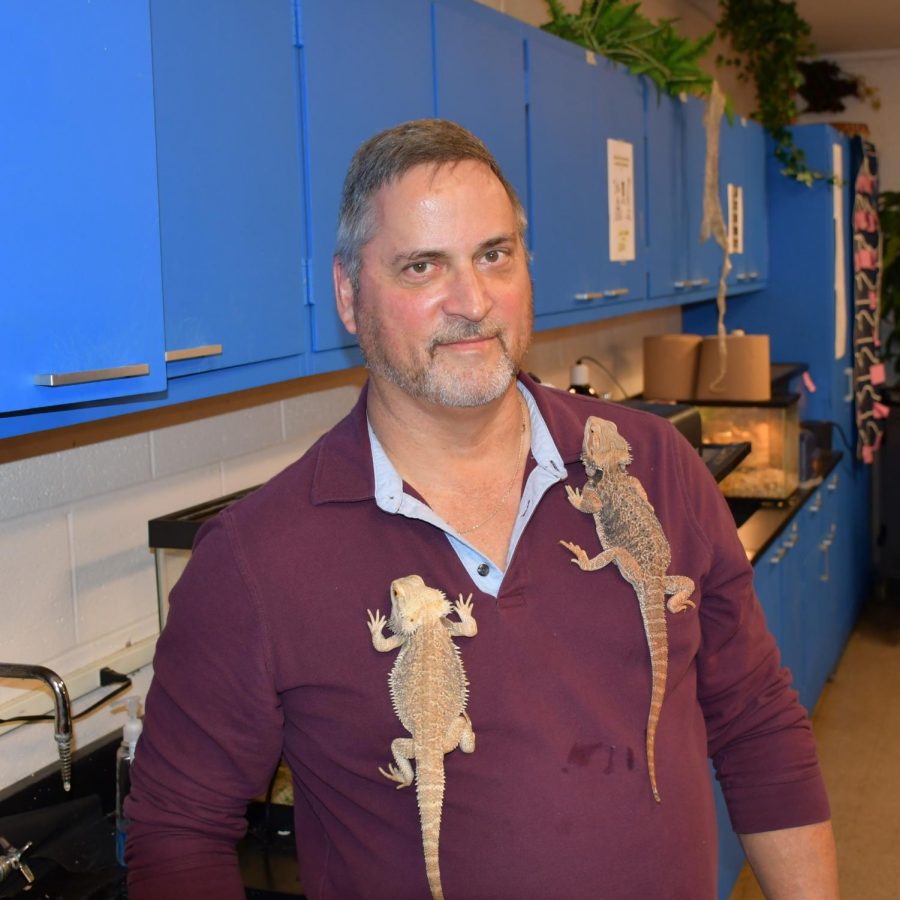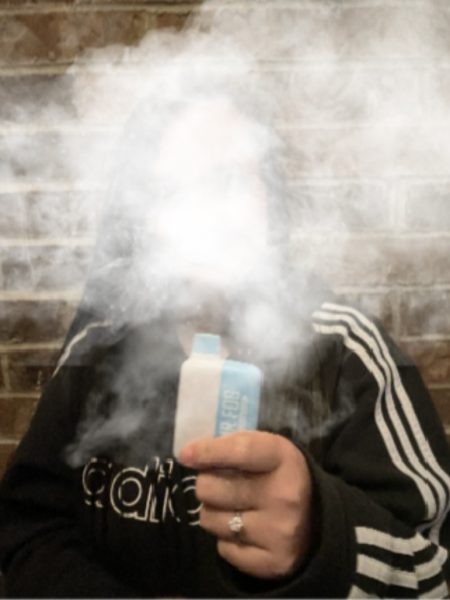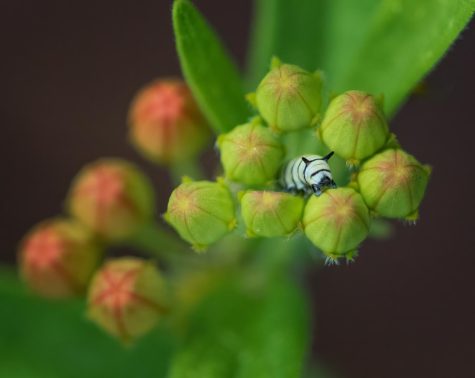Live animals enhance learning in Kues’ class
Snakes, frogs and bearded dragons live in room 226
January 28, 2019
Science teacher Ray Kues has nine reptiles in his classroom that he uses to educate students.
His nine reptiles include four corn snakes, one California king snake, two bearded dragons and two poison dart frogs.
Kues said he chose the animals because they’re easy to maintain, and the students in his class can handle most of them.
Some of the specific activities he uses the reptiles for are food chains and food webs.
Kues said that he doesn’t force the animals onto any of the students especially those who are afraid but says that the animals are an opportunity for students to be able to confront their fears.
“Quite a few students have gotten over their fear of snakes by eventually holding them,” he said.
Do the snakes ever escape and get out in or during class?
“They’re snakes—of course they get loose,” Kues said. “I have always found them. They normally don’t go that far or get out very often.”
What happens with the animals over summer or Christmas break? Kues said they are taken home over breaks.
Kues says he has always had animals, even before he was teaching. He also has two dogs at home and has owned turtles, hamsters and parrots. Kues also said he recently adopted five snakes and has found homes for three of them.
The animals are one of many ways Kues tries to lighten the mood in his classroom.
Students might wonder what’s so funny about the poison dart frogs.
“The poison dart frogs in the classroom aren’t really poisonous. They are only poisonous if you feed them poison insects (which they find in the wild). I feed mine wingless fruit flies so they are completely harmless—but don’t tell (the students)—they still think they’re poisonous!”










